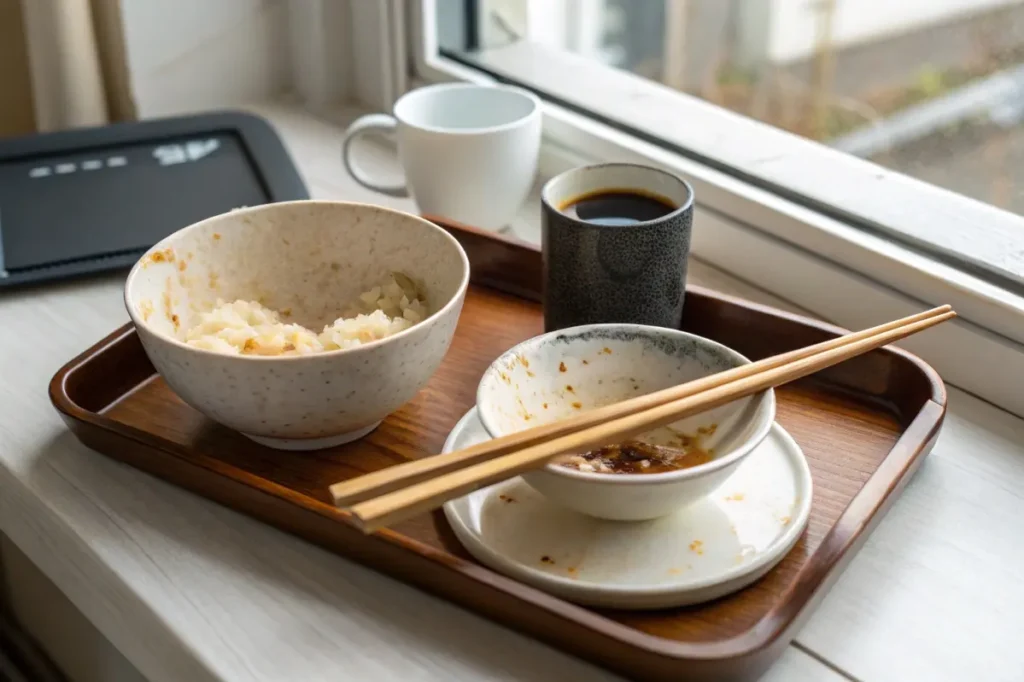Introduction
Breakfast in Japanese culture has long been celebrated for its balance, presentation, and flavorful simplicity. In Japanese, the word for breakfast is asa gohan (朝ごはん), which literally translates to “morning rice.” While rice is indeed a mainstay, the modern Japanese breakfast scene offers a variety of options—from classic miso soup and grilled fish to quick, Western-inspired choices like toast and eggs.
Yet, with the hustle of daily life, many Japanese now opt for convenient approaches to morning meals. Some might grab a simple bowl of leftover dinner in Japanese style, repurposing last night’s curry or stir-fry into a hearty breakfast. Others integrate fresh, global influences—like coffee, cereal, or yogurt—merging Japan’s culinary traditions with new perspectives.
In this article, we’ll explore the evolution of breakfast in Japanese contexts, addressing commonly asked questions such as “Does gohan mean lunch?” and “What does gohan mean in Japanese?” We’ll delve into staple ingredients, easy recipes, and cultural insights, ensuring you’re equipped to enjoy or recreate a flavorful Japanese breakfast at home. Along the way, we’ll reference valuable resources—like japanese-chicken-fried-rice-recipe-2—that highlight how leftover rice can transform into a quick, scrumptious morning meal.
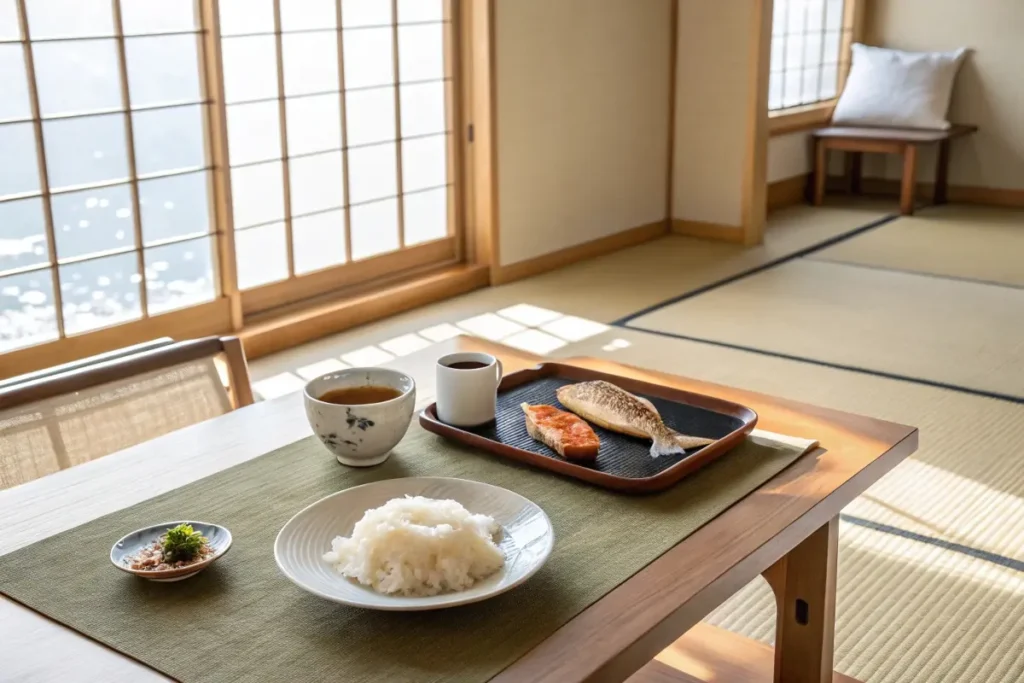
1. What Is Breakfast Called in Japanese?
Asa Gohan vs. Other Meals
In Japanese, the most direct term for breakfast is asa gohan (朝ごはん)—asa meaning “morning” and gohan meaning “rice” or “meal.” This underscores the cultural significance of rice. Yet, you might see the word choushoku (朝食) in more formal contexts, such as hotels or menus. When comparing meal terms:
- Asa gohan (朝ごはん): Breakfast, often a bit casual.
- Hiru gohan (昼ごはん): Lunch, literally “noon meal.”
- Ban gohan (晩ごはん) or Yoru gohan (夜ごはん): Dinner, meaning “evening meal.”
Hence, gohan itself can reference a meal, not necessarily “rice” alone. While “Does gohan mean lunch?” is a common question, the short answer is that hiru gohan is lunch, but gohan alone means either “rice” or “meal,” depending on context.
Variations on the Word “Breakfast”
- Asa-meshi (朝飯): A more colloquial, sometimes masculine or casual phrase akin to “morning grub.”
- Choushoku (朝食): Formal usage, often in writing or official contexts.
Cultural Relevance
Japan’s emphasis on what do Japanese people eat for breakfast stems from a history of carefully curated meals that offer a balanced start to the day. Even as lifestyles evolve, the language around meals remains central to daily life. Words like asa gohan demonstrate how breakfast is anchored in the idea of rice as a fundamental staple.
Meal Identity Through Language
Beyond the practicality of a morning meal, the term asa gohan signifies the cherished tradition of beginning the day with nourishing foods. For instance, in rural areas or among older generations, skipping asa gohan is nearly unthinkable; for them, the day’s energy arises from carefully prepared rice, fish, and miso soup.
Bridging Tradition and Modernity
As Japan opened to Western influences, the practice of enjoying “toast and coffee” in the morning became more popular. Many cafes serve a “morning set,” often labeled asa setto (モーニングセット) in katakana, blending Japanese and Western terms to reflect the country’s integrated approach to breakfast.
Breakfast in Japanese contexts highlight this dual identity: a robust heritage of rice-based meals, plus openness to new breakfast norms such as cereal or fruit smoothies. For a deeper dive into mixing tradition and modern flavors, see japanese-steak-recipe, which can provide leftover steak slices for a protein boost in your morning meal.
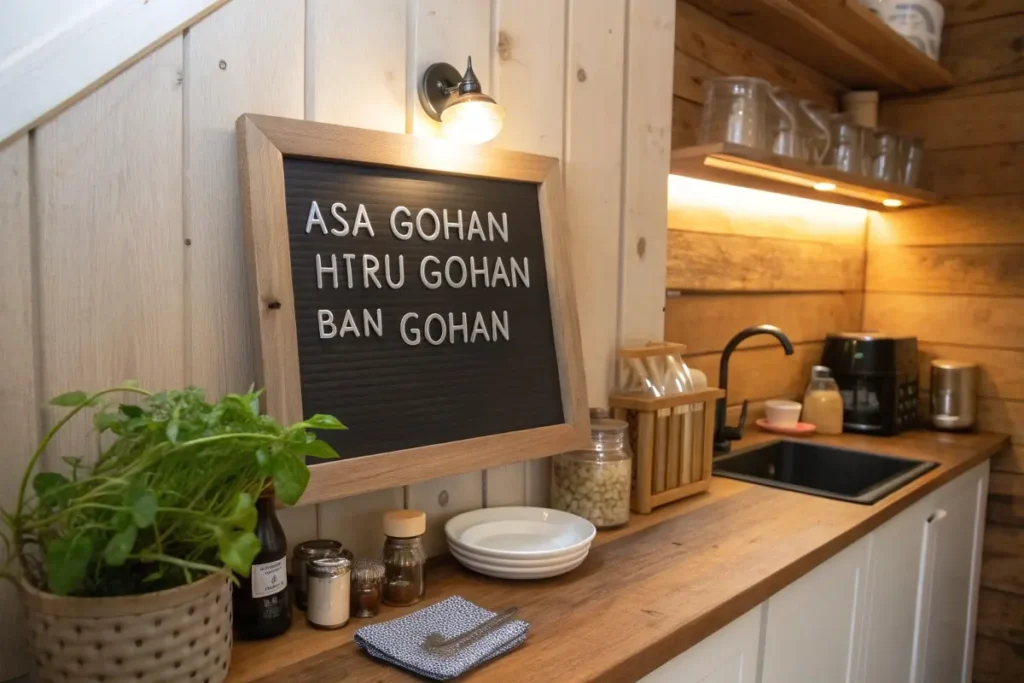
2. Core Components of a Traditional Japanese Breakfast
While modern variations abound, the classic breakfast in Japanese culture remains anchored in tradition. A standard lineup includes:
- Steamed Rice (Gohan)
- Often short-grain white rice, though some health-conscious homes use brown or mixed grains.
- Rice cookers keep it warm, so there’s minimal fuss.
- Miso Soup
- A light, fermented soybean-based soup offering probiotics and a rich umami flavor.
- Typically includes tofu, seaweed (wakame), and vegetables like daikon radish.
- Grilled Fish
- Salmon (shake) or mackerel (saba) are common, providing lean protein.
- Marinated or salted overnight for deeper flavor.
- Nori (Dried Seaweed)
- Sheets of seaweed used as a wrap for rice or eaten alongside fish.
- Contributes minerals and a subtle salty taste.
- Pickled Vegetables (Tsukemono)
- Crisp picks like takuan (yellow pickled daikon) or cucumber, vital for acidity and crunch.
- Egg Dish
- In some families, a rolled omelet (tamagoyaki) is a staple.
- Slightly sweet or savory, it balances well with the rest of the meal.
Serving Style
In many households, each item sits in its own small bowl or plate, reflecting the Japanese concept of portioning and visual harmony. The variety of flavors—salty, sweet, sour, and umami—converges to create a nutritionally balanced meal.
Optional Sides and Condiments
- Natto (Fermented Soybeans): Sticky, pungent beans loved for their probiotic and protein content.
- Umeboshi (Pickled Plums): Sour, salted plums that can pair with rice or mitigate the fish’s richness.
- Seasoned Seaweed (Furikake): A sprinkle of dried flakes—fish, sesame, or seaweed—over rice.
Focus on Freshness and Balance
The aesthetic of a Japanese breakfast matters. Clean flavors, vibrant colors, and minimal processing emphasize natural tastes. For an exploration of how vegetables can liven your morning, see our vegetables-japanese-recipe to incorporate fresh produce efficiently.
Why This Matters
A balanced, nutrient-rich start to the day resonates with Japan’s historical reliance on agriculture and fishery. The synergy of these dishes ensures adequate protein, fiber, and vitamins without heavy fats or excessive sugars. For those practicing a modern, busier lifestyle, these items can be prepped the evening before or consumed in smaller portions.
Traditional vs. Modern Twist
While some families still follow this multi-dish routine daily, others reserve it for weekends or special occasions. On busy weekdays, quick versions might skip fish or rely on instant miso soup packets. Still, the foundational principle—enjoying balanced, umami-forward dishes—remains a hallmark of breakfast in Japanese contexts.
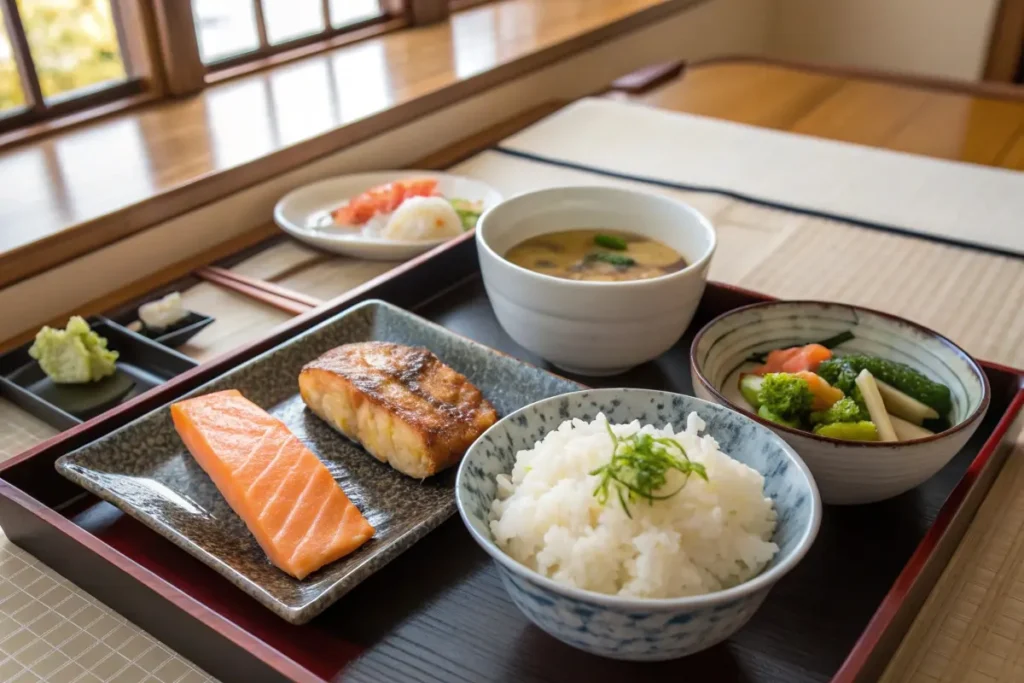
3. Modern Twists and Western Influences
Though the foundation of breakfast in Japanese culture remains deeply traditional, modern lifestyles and external influences have reshaped how many start their day. Busy mornings, Western media, and a globalized culinary scene introduce new elements—like toast, coffee, or yogurt—that complement classic staples.
Common Western Adoptions
- Toast and Jam
- Thick, fluffy shokupan (Japanese milk bread) is often toasted and slathered with jam or butter.
- Sometimes topped with sweet azuki bean paste or drizzled with condensed milk for a Japan-meets-West fusion.
- Eggs, Bacon, and Coffee
- Hotels and cafés often serve American-style scrambled eggs, bacon, and a cup of black coffee, labeling it as a “morning set.”
- Japanese flair might appear in the form of soy sauce or miso sauce for the eggs.
- Cereal and Milk
- Growing popularity among families with children.
- Often combined with fruit or yogurt to maintain some measure of the balanced approach that Japanese cuisine values.
Café Culture and “Morning Service”
In many cafés, a morning service offers a free or discounted breakfast item (toast with butter or jam, plus a boiled egg) if you order a coffee. This concept, originally popularized in the city of Nagoya, spread to other regions. It merges Japanese hospitality with Western breakfast norms, resulting in a convenient meal for office workers or students.
Incorporating Japanese Elements
Even in these Western-inflected breakfasts, a small side dish of pickles, soup, or leftover dinner items might appear. For instance, an office worker might grab a convenience-store onigiri and pair it with coffee, reflecting an effortless synergy of East and West. If you’re trying to replicate a “combo meal” approach, explore our japanese-chicken-fried-rice-recipe to transform dinner leftovers into a microwavable breakfast portion.
Reasons Behind This Shift
- Time Constraints: Urban dwellers or salary workers have tight schedules, so quick prep or grab-and-go items are essential.
- Global Palate: Younger generations grew up exposed to Western fast food, social media recipes, and international travel.
- Health Trends: Some appreciate the lighter feel of toast or cereal compared to a full spread of fish and rice early in the morning.
Balancing Authenticity with Convenience
Modern Japanese households often mix and match. A typical day might feature fish and rice on weekends, while weekday mornings see toast and coffee dominating. The variation ensures that cultural identity remains intact without ignoring practical needs.
To explore bridging these styles in your own home, see our japanese-vegan-recipes for plant-based spins that adapt easily into Western-style breakfasts, such as tofu scrambles or miso-glazed veggies.
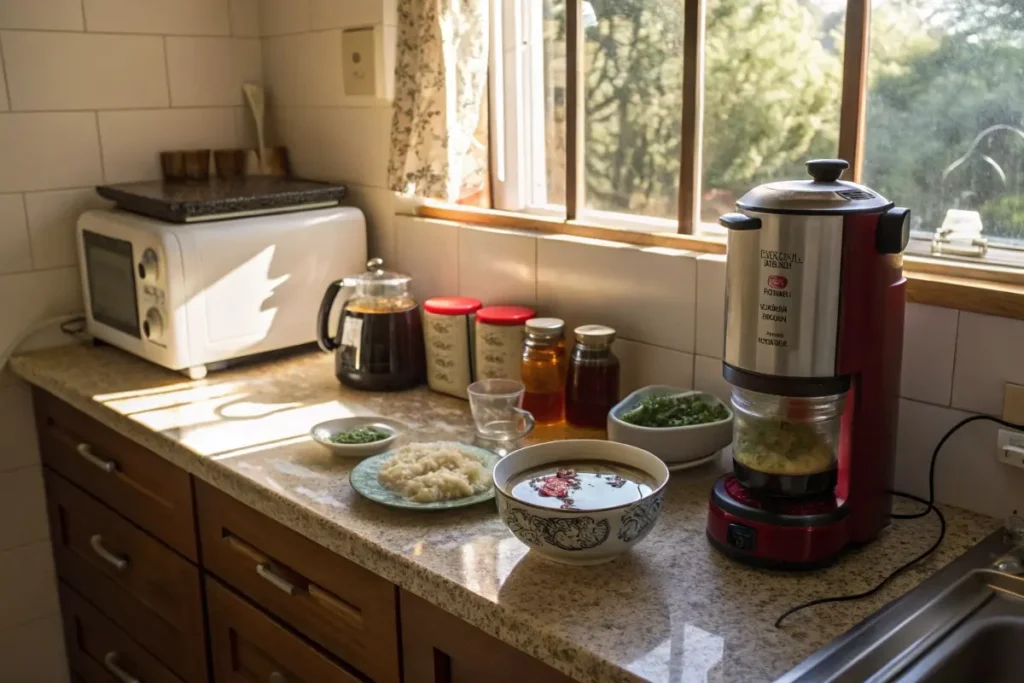
4. Breakfast Variations: From Quick Meals to Weekend Spreads
In Japan, breakfast in Japanese can range from a five-minute on-the-go arrangement to an elaborate, multi-course feast—especially during weekends or vacations. Let’s explore different scenarios that define how flexible and inclusive Japanese breakfasts can be.
Weekday Rush: Quick Fixes
- Convenience Store Onigiri
- Filled with salmon, tuna-mayo, or pickled plum.
- Perfect for a busy commuter needing portable energy.
- Instant Miso Soup Packets
- Quick to prepare with just hot water.
- Maintains some semblance of tradition without extensive cooking.
- Leftover Dinner Adaptations
- Repurpose leftover curry in japanese style or fried rice.
- Warm it up and pair with a small salad or pickles.
Weekend or Holiday Breakfasts
- Full Traditional Spread
- Rice, miso soup, fish, tamagoyaki (rolled omelet), pickles, and possibly natto (fermented soybeans).
- Emphasizes leisurely cooking and presentation.
- Western-Style Brunch
- Fluffy pancakes with whipped cream, coffee, fresh fruit.
- Some families incorporate matcha lattes or dorayaki (pancake with sweet bean filling) for a sweet note.
Bed and Breakfast (Minshuku) Experiences
What is a Japanese bed and breakfast called? Often referred to as a minshuku or a ryokan (though ryokan typically offers dinner, too). Guests can enjoy an immersive morning meal showcasing local specialties—like fresh seafood near coastal towns or mountain vegetables (sansai) in rural areas.
- Ryokan Breakfast
- Typically served in your room or a communal dining area.
- Might include local fish, miso soup, homemade pickles, and seasonal fruit.
- Minshuku Style
- More casual, family-run lodging.
- Host families often serve homemade miso, homegrown veggies, or even fresh eggs from their farm.
Regional Flair
Different regions of Japan have distinct breakfast items. For instance:
- Hokkaido: Dairy products like cheese or milk might appear, pairing with bread or local seafood.
- Kyushu: Sweeter flavor profiles, perhaps with mentaiko (spicy cod roe) on rice.
- Shikoku: Deeper emphasis on fish or specialty produce like citrus-based pickles.
Balancing Tradition and Personal Taste
One family member may love natto, while another despises its stickiness. Some prefer an all-Western approach with cereal and coffee, while grandparents cling to traditional fish and rice. This variety highlights how breakfast in Japanese culture accommodates personal choice within a broader tapestry of flavor and presentation.
For a taste of how leftover proteins can transform into a unique breakfast side, explore our authentic-japanese-short-ribs-recipe-a-culinary-journey and see how shredded short ribs might fit into a hearty weekend spread or a quick weekday burrito.
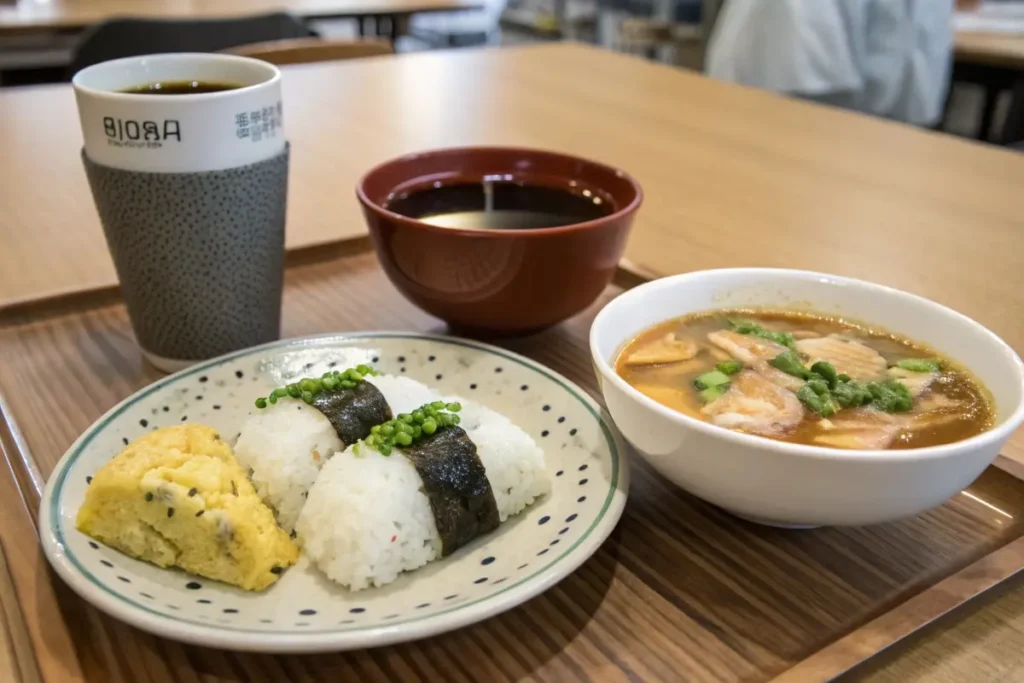
5. Common Misconceptions: Gohan and More
Does “Gohan” Mean Lunch?
A recurring question is “Does gohan mean lunch?” The short answer is no, but context matters. In Japanese:
- Gohan (ご飯) can mean “rice” or “meal,” depending on the situation.
- Hiru gohan (昼ごはん) specifically means lunch, while asa gohan (朝ごはん) is breakfast, and ban gohan (晩ごはん) or yoru gohan (夜ごはん) is dinner.
Is Every Breakfast Heavy?
Some assume a typical breakfast in Japanese format always includes miso soup, fish, and multiple sides. While that’s historically accurate, modern life sees many opting for simpler or Western-leaning meals. A quick slice of bread with jam might suffice on weekdays.
Is Miso Soup Always Present?
Miso soup is a cornerstone, but not mandatory. Busy mornings might rely on instant coffee, cereal, or conbini (convenience store) bread. Miso soup’s presence often depends on time and personal taste.
Are Raw Eggs a Staple for Breakfast?
Western media often highlights raw egg consumption—like tamago kake gohan (TKG), a raw egg stirred into hot rice. Yes, TKG is popular among some, but it’s not universal. Many households prefer a rolled omelet or scrambled eggs.
What About Drink Options?
- Green Tea: Classic choice.
- Coffee: Increasingly the norm, particularly in urban areas.
- Milk or Juice: Common for children or those preferring lighter tastes.
Can Non-Rice Eaters Enjoy a Japanese Breakfast?
Certainly. People who skip or limit rice might choose bread, noodles (udon or soba), or salads. It’s more about the balanced combination of flavors than strictly about rice consumption.
Myth of Over-Complexity
Western visitors sometimes think making a Japanese breakfast requires extensive cooking. While a full spread can be elaborate, simpler versions exist. Instant miso soup packets, leftover rice, or fish baked in foil helps reduce morning chaos. If you’re short on time, consider leftover japanese-chicken-fried-rice-recipe-2 (https://thejapaneserecipes.com/japanese-chicken-fried-rice-recipe-2/) for a speedy breakfast stir-fry.
Revisiting “What Is a Japanese Bed and Breakfast Called?”
Minshuku or ryokan experiences revolve around overnight lodging plus a morning meal, typically showcasing local produce. These are not simple B&Bs in the Western sense but cultural havens for travelers seeking immersion. The breakfasts can be quite ornate, featuring local fish or seasonal vegetables.
By clarifying these misconceptions, we see that breakfast in Japanese contexts revolve around flexible traditions, regional preferences, and daily realities. Whether you want a hearty spread or a quick fix, you can easily adapt. For adventurous cooks, see japanese-radish-recipe for a quick, tangy side that pairs beautifully with eggs or rice in the morning.
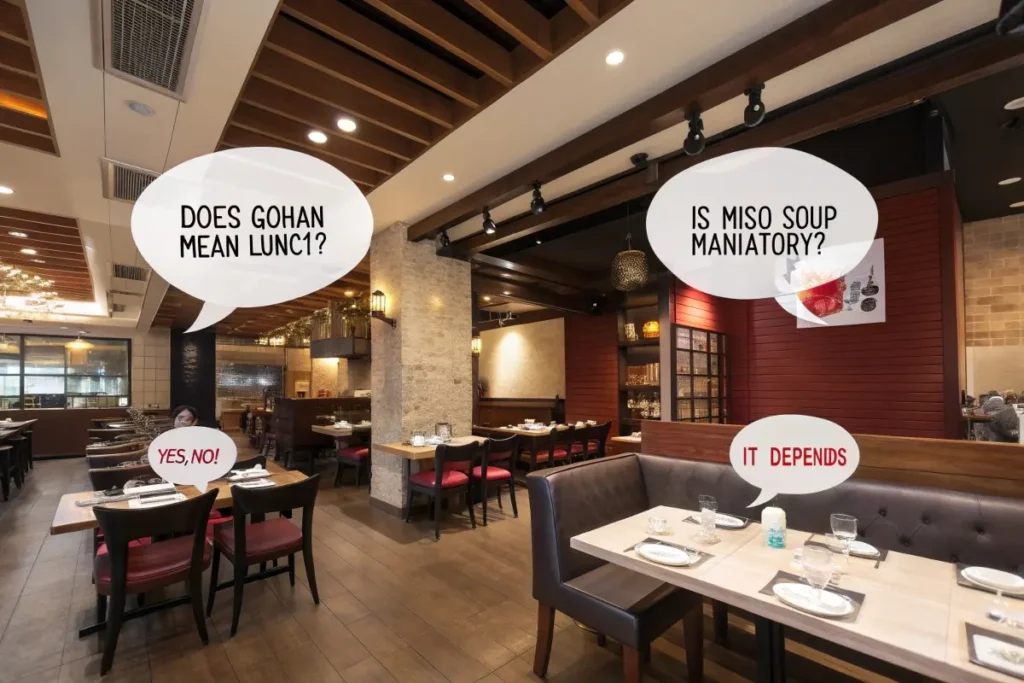
History and Context
Tracing the roots of breakfast in Japanese customs reveals how global, political, and technological forces shape everyday meals. Let’s explore the evolution of Japan’s morning table:
Early Eras and Agricultural Roots
In pre-modern Japan (before the Edo period), meals were simple and reliant on local produce. Morning nourishment centered on leftover cooked grains—often millet or barley—accompanied by pickles or foraged vegetables. Fish was a luxury in inland regions, but coastal communities integrated fresh catch early on.
Edo Period (1603–1868)
During Edo times, the merchant class in growing cities could afford more variety. Rice replaced millet among city dwellers who wanted to mimic samurai diets. Miso soup, pickles, and grilled fish were typical. The concept of structured mealtimes (asa, hiru, ban) became more standardized, reflecting the era’s organizational push and the rise of consistent markets.
Meiji Restoration to Pre-WWII
From 1868 onward, Japan embraced Western ideas. Bread, dairy, and coffee trickled into aristocratic or well-off households. Still, for most people, a breakfast of rice, pickled vegetables, and perhaps miso soup persisted. In major port cities like Yokohama, café culture began, introducing morning coffee and pastries to curious locals.
Post-War Japan and Economic Boom
After WWII, foreign military presence and economic revitalization led to an explosion of Western-influenced foods: cereals, packaged bread, and instant coffee. The “salaryman” lifestyle necessitated quick breakfasts—instant noodles or convenience-store bento. Meanwhile, traditional breakfasts remained strong in rural areas or among older demographics.
Modern Globalization
Today, breakfast in Japanese contexts reflect a tapestry of influences. Trendy cafés offer avocado toast with wasabi-laced spreads, supermarkets sell pre-made tamagoyaki or natto packs, and family restaurants integrate all-day breakfast menus with both Japanese and Western sets. Social media further globalizes the menu, inspiring Japanese families to experiment with new flavors, from spiced eggs to fruit-infused yogurt.
Cultural Continuity
While “gohan” literally means “rice” or “meal,” breakfast remains an important symbol of daily life. Many households still enjoy weekend breakfasts reminiscent of the Edo era but might follow it with coffee. This fusion underscores Japan’s adaptability, reaffirming the deep cultural significance of a well-rounded asa gohan.
For readers drawn to historical cooking methods or produce usage, check out our discover-japanese-recipes resource, which showcases how local traditions adapt to modern tastes. This historical narrative emphasizes that breakfast in Japanese culture stands at a rich intersection of time, technology, and personal preference.
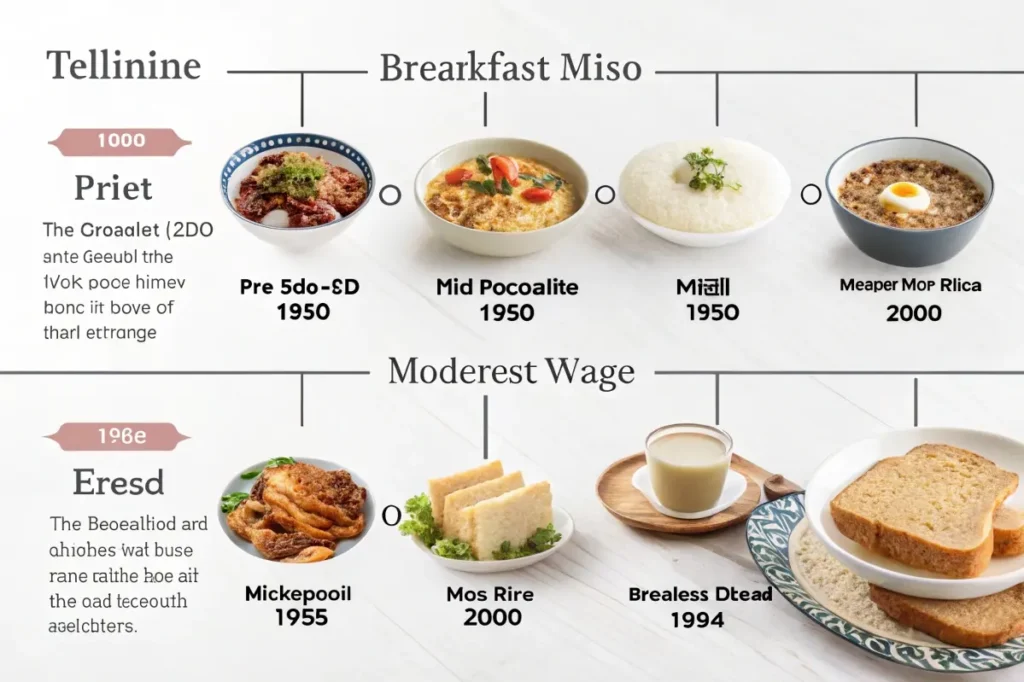
Practical Examples and Use Cases
1- Case 1: Office Worker in Tokyo
- Morning Routine: Wakes at 7 AM, has only 20 minutes to spare.
- Breakfast Choice: Instant miso soup packet, a convenience-store onigiri, and a carton of tea.
- Outcome: Quick, portable, and a balance of carb (rice), protein (fish or tuna in onigiri), plus fermented miso.
2- Case 2: Traditional Family Weekend
- Scenario: Parents and grandparents gather for a leisurely morning meal.
- Table Spread: Steamed rice, grilled salmon, miso soup, pickled cucumbers, tamagoyaki, and fresh fruit.
- Outcome: Emphasizes bonding time, upholding cultural continuity, and savoring variety.
3- Case 3: Westernized Student Abroad
- Context: A Japanese student living in the U.S. tries to maintain “Japanese breakfast” while adapting local ingredients.
- Meal: Microwave-cooked rice, instant miso soup, and a slice of leftover pizza. Slightly unorthodox but satisfies her craving for familiar tastes.
- Outcome: Reflects the hybrid nature of breakfast in Japanese culture in a global setting.
4- Case 4: Ryokan Guest Experience
- Situation: A traveler stays at a traditional inn (ryokan) offering a full-course Japanese breakfast.
- Highlights: Seasonal fish, tofu hot pot, miso soup with region-specific vegetables, homemade pickles.
- Outcome: Deeply immersive cultural meal that might differ significantly from everyday home breakfasts.
Key Takeaways
- Flexibility: Whether you’re a busy commuter or a relaxed family, breakfast in Japanese culture morphs to meet time and preference constraints.
- Combining Leftovers: Don’t hesitate to use leftover japanese-curry-recipe-one-piece or steak-japanese-recipe from dinner.
- Taste and Balance: Even quick breakfasts integrate important nutritional elements—rice or bread for carbs, soup or vegetables for vitamins, and fish or egg for protein.
For a more detailed look at bridging old and new, see our japanese-vegan-recipes for inspiration on how to incorporate vegetables, tofu, and miso into your morning routine. These real-life examples prove that breakfast in Japanese culture thrives under diverse circumstances.
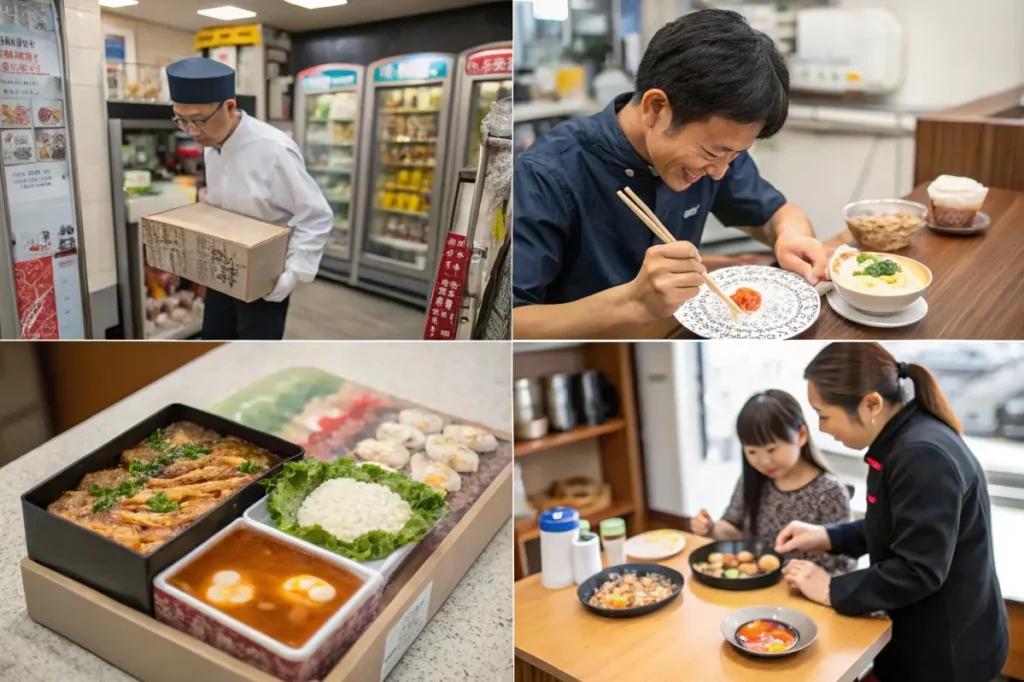
FAQs
- What is breakfast called in Japanese?
The most common term is asa gohan (朝ごはん), literally “morning rice.” Another formal term is choushoku (朝食), often used by hotels or restaurants. Both refer to the first meal of the day in Japan. - Does gohan mean lunch?
Gohan (ご飯) can mean “rice” or “meal.” On its own, it doesn’t specifically mean lunch. Instead, hiru gohan (昼ごはん) is lunch, asa gohan (朝ごはん) is breakfast, and ban gohan (晩ごはん) or yoru gohan (夜ごはん) is dinner. - What does Gohan mean in Japanese?
Gohan (ご飯) typically means either “cooked rice” or “meal,” depending on context. It’s essential in Japanese cuisine, since rice historically anchors most meals. - What is a Japanese bed and breakfast called?
Traditional lodging with breakfast is often a ryokan or minshuku. Ryokans are more upscale, while minshuku offer a casual, family-run environment. Both usually include breakfast featuring local, seasonal foods. - What do Japanese people eat for breakfast?
They often eat rice, miso soup, grilled fish, pickled vegetables, and sometimes egg dishes. However, modern variations can include toast, coffee, cereal, or a fusion of Western and Japanese elements. - Are there easy Japanese breakfast recipes for beginners?
Yes. Start with quick staples like instant miso soup, onigiri, or a simple tamagoyaki (rolled omelet). You can also check out japanese-chicken-fried-rice-recipe-2 for leftover rice ideas. - Can I skip fish and still have a Japanese breakfast?
Absolutely. Some people use tofu or eggs as a protein source, or they adopt Western-style items like bacon or sausage. Others prefer plant-based options like natto or mushrooms.

Conclusion
Breakfast in Japanese culture embodies far more than just rice or miso soup. It’s a testament to Japan’s adaptability, balancing tradition with contemporary lifestyles. Whether your morning spread showcases asa gohan (morning rice), a grilled fish side, or a quick slice of toast and coffee, the guiding principle remains: flavor harmony, visual appeal, and nutritional balance.
Over time, Western influences, busy work schedules, and regional innovations introduced new items—like cereal, jam-filled toast, or even leftover steak from the night before. Nonetheless, the spirit of Japanese breakfast persists, offering an energizing start to the day. For those seeking deeper inspiration, consider rummaging through best-japanese-foods to find mouthwatering ideas that can adapt to your morning routine.
In short, breakfast in Japanese contexts is as diverse as modern life demands. You can savor a leisurely, traditional feast on weekends or grab a conbini onigiri en route to work. By integrating these versatile elements—rice, soups, fish, Western staples, or leftover dinner items—you can craft a morning meal that satisfies taste buds and health requirements alike. Embrace the variety, find your perfect blend, and start your day the Japanese way.
